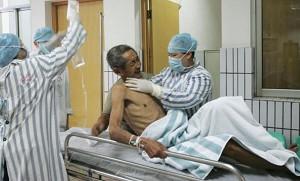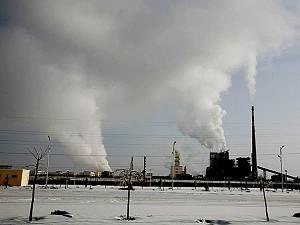In late June an unknown disease erupted in Ziyang City and Neijiang, in Sichuan Province. The Chinese Communist Party (CCP) released the news on July 22. Within a week of the announcement, the high mortality rate, the baffling manner of the spread of the disease, and the lack of clear and reliable information, had caught the attention of the outside world.
According to the July 28 announcement of China’s Medical Department, there were 152 cases of the illness and 31 deaths. Seven people had been released from the hospital at that time.
China’s practice of not publicizing life-threatening infectious disease epidemics and not cooperating with world health organizations has heightened concerns and raised questions about this recent outbreak.
Epidemic Timetable
The first case was revealed on June 24. The news began to disseminate on the Internet in July.
On the evening of July 22, the Sichuan Health Department issued the first announcement that in Ziyang City, Sichuan Province, a patient had been diagnosed with an unknown disease. The patient’s symptoms included high fever, weakness accompanied by nausea, vomiting, followed by symptoms of hypodermic blood stasis and shock. Up to July 21, the hospital had admitted 20 patients. Nine of them have died, and six remain in critical condition.
On July 25, Xinhua News Agency reported that, after a rudimentary examination, the recent disease discovered in Ziyan and Neijiang, had been confirmed as swine disease, known as Streptococcus suis II.
Following this, on July 27, China’s Medical Department News Office announced that, up to noon of that day, the total of Streptococcus suis infection cases in Sichuan had reached 131, with 27 dead, and 21 critically ill.
In Beijing the same day, Xu Jianguo, Manager of the Infectious Disease Prevention Control Bureau at the Chinese Disease Prevention Control Center, indicated that the means of transmission of the pathogenic bacterium between the patient and sick livestock was clear. Since “the composition of the bacterium in pigs and persons are the same” it conforms to the characteristics of Streptococcus suis II.
Epidemic Distribution and Characteristics
The patients were all farmers, with ages ranging from 30 to 70. Cases of illness have been scattered across Ziyang City’s Yanjiang District, Jianyang City, and Lezhi County, as well as Neijiang City’s Zizhong County. The illness is known to have affected 75 villages in 40 counties.
Four hundred dead pigs have been found across more than 300 individual farming households with poor sanitary conditions. The probability of transmission between pigs is low. In most cases that involved the sudden death of a pig other pigs in the group were not infected.
Chen Chihhai, leader of Ziyang City’s clinical expert group, who had been sent by China’s Medical Department, indicated that the patients had one common characteristic—all of them had experienced direct contact with sick or dead pigs, and their hands had scars from wounds.
The main symptoms included meningitis, endocarditis, septicemia, arthritis, bronchopneumonia and associated fever which, when serious, might cause shock and hemorrhagic agglutination.
Swine Streptococcus infections are quite rare. The first case of the illness was discovered in Denmark in 1968.
High Mortality Rate Surprises the World Health Organization (WHO)
One person stated that the entire body of his deceased family member turned dark with red spots. Another patient’s family member said that a pig raised by the family had died suddenly and all ten people in the family had eaten the pork from the dead pig. The maternal grandfather had been hospitalized with fever and weakness.
Ling Dequan, a 63-year-old farmer from Ziyang City’s Yanjiang District, Nanjin County, Inchiao Village, was one of the dead. His son, Ling Wenzhong, said that he was with his father the morning he fell ill, and that a mere 12 hours later, the disease took his father’s life.
Bob Dietz, West Pacific Ocean spokesperson for the WHO, has indicated that the outburst of swine Streptococcus in Sichuan this time is “unprecedented, the worst in history,” and that the extent of the mortality rate is disturbing and astonishing.
Cause of the Disease Uncertain
Professor Lai Xiusui, of the University of Taiwan’s Veterinarian Department, said that at the present time there are no reports indicating whether human beings might be infected by Streptococcus from pigs. Judging by the fact that there has been no such case in Taiwan in the past, the infection rate should be extremely low. However, further study and judgment will depend on a better understanding of the situation in Mainland China.
Xu Mingmei, Associate Professor at Hong Kong Chinese University’s Microorganism Department, has doubts, as swine Streptococcus type II has rarely infected humans, nor have there been any large-scale breakouts. She believes the cause of the disease merits investigation.
On July 27, a WHO spokesperson claimed that it was too early to conclude whether this kind of disease would spread swiftly.
Some experts have claimed that swine Streptococcus has never broken out on such large scale before, so it might have been caused by a mutation.
Restrictions Placed on Media Coverage
Currently, authorities have prohibited media from entering the hospital wards to investigate the outbreak, and family members of patients have been informed not to accept interviews.
The New China Network has reported that two police cars have been parked in front of Ziyang City’s First People’s Hospital and that police officers stand guard outside the wards of the hospital’s infection branch. In addition, a heavy lock secures the steel door of the ward, and four to five policemen maintain watch in the hospital yard.
The Hong Kong Wenhui Daily reported that on July 27, the Chongqing Evening News and other Chinese media were summoned for an “admonitory talk,” at which the Propaganda Department acknowledged the epidemic situation which they announced “had problems” and “added calamity.” As a result, authorities had canceled local news coverage. Attendees were then ordered to leave within a given time; otherwise vehicles and guards would be provided to “escort” them.
China Rejects WHO’s Investigation and Assistance
The WHO has indicated its willingness to assist China in dealings with the Sichuan epidemic, but China rejected the offer.
The Truth Concealed?
A Sichuan Ziyang City resident said that the mystery disease was caused by pigs and sheep raised by individual farmers, and there was basically no connection between villages. So what brought about the infection?
Swine Streptococcus rarely causes community infections. Common antibiotics normally provide very effective cure. Since the means of infection was clear, why were the authorities carrying out postmortem examinations, taking samples, and then cremating the body immediately after the death of a patient? Why did they also require same-day collection and burning of the treatment waste disposals from the infection ward?
It has been reported that, at the present time, the germs have only evolved to the stage of livestock transfer to people, and that the infection would not spread from human to human. So why have the authorities restricted the circulation of people throughout the epidemic area?
In 2003, the CCP concealed SARS. Again this year, the CCP concealed the Qinghai bird flu epidemic; all announcements carefully evaded the issue. The outside world has reason to be concerned about the current spread of disease in Sichuan.





Friends Read Free